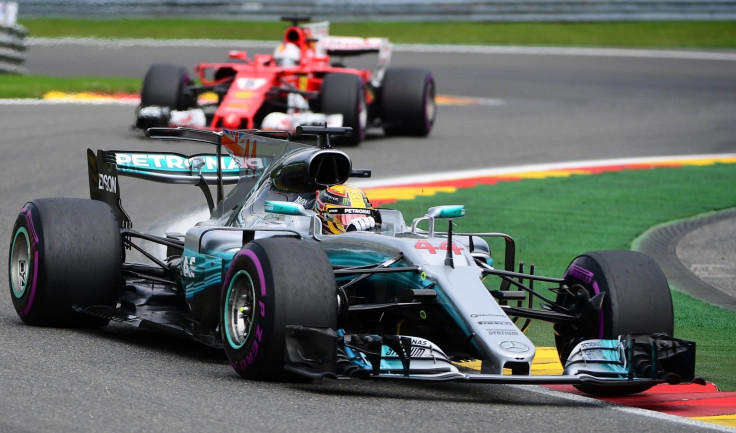How Qualcomm hacked home Wi-Fi to grab Formula One car data in seconds
Mercedes-AMG and Qualcomm reveal how speedy data transfers win races.

It will not surprise you to learn that data is big business in Formula One. Each car carries over 200 sensors monitoring everything from the driver's input through the steering wheel and pedals, to tyre temperature and pressure, aerodynamic load on the car's wings, G-force, engine and gearbox performance and much more.
Reigning F1 champions Mercedes-AMG turned to US semiconductor company Qualcomm, best known for producing smartphone processors, in 2015. The firm became a partner of the Brackley, Northamptonshire-based team, providing technical assistance as well as sponsorship on its two race cars, currently driven by Lewis Hamilton and Valtteri Bottas.
IBTimes UK was invited by Qualcomm to tour the Mercedes-AMG factory and learn more about how the two partners work together to improve team performance.
"A phenomenal amount of data is recorded during Friday practice and Saturday qualifying," Qualcomm vice president Graeme Davison tells us, adding that Qualcomm's first step when joining Mercedes was to engage in a classic piece of F1 rule-bending.
Mercedes' problem, shared up and down the grid, was that data was taken from the car via a cable, which took precious time away from practice sessions. This delayed how long it took engineers to start analysing it, and resulted in changes not being made to the car until the next time it visited the garage. The car was always sent back out on track with changes made based on old data.
Davison explained: "We spent a long time looking to see what we could do, and that's when you start getting very clever. You look at what you're allowed and not allowed to do within the rules...when the rule says 'you can't do this' what it doesn't say is 'you can't do that' and while there's a very clear rule in Formula One that says you're not allowed to transmit in 2.4 through to 2.8GHz, effectively the old Wi-Fi band you might have at home, there was not any rule that said you cannot transmit in 5GHz Wi-Fi. So we said, 'let's just use that'."
This gave the team a larger digital pipe to fire data through as the car came into the pits. Plugging in was no longer required and data could be acted upon more quickly. However, more bandwidth encouraged the team to add more sensors and gather even more data, putting them back to the same disadvantage as before; the data couldn't be taken quickly enough during stops.
'We ripped Wi-Fi to shreds'
"So what we did," Davison continues, "is we took 5GHz Wi-Fi and ripped it to shreds, threw away everything that was standard Wi-Fi from your home, re-routed most of it, and did a bunch of assumptions."

This meant stripping out most of the protocols your home Wi-Fi connection adheres to. The network was configured to skip any authentication stages, because the network would always only ever be made up of the car and the team's computers in the pit box. As soon as the car touched the network, from many metres away down the pit lane, it would connect and begin transmitting.
Security could also be bypassed, "because the data we've got doesn't mean anything to anyone apart from Mercedes...we didn't have to protect too much of it", Davison said.
The network speed was then boosted to 60GHz for when the car is inside the Mercedes garage. That means a 5GHz connection is established along the pit lane, which then hands over to a 60Ghz network four metres before the garage for the last few seconds of data transfer. This combined effort means all data is copied across to the team "by the time the car has hit the jacks", and can be worked on immediately.
During practice and qualifying, where there could be several minutes between entering and exiting the garage, the team now has more time to analyse data and act upon it, adjusting parts of the car before it heads back out for another stint.
At each stop, the bespoke network can transmit 12 music album's worth of data from car to team, according to Qualcomm, which is somewhere between one and two gigabytes.
The end result of transferring data more quickly is an extra two to three laps of track time across a one-hour practice session. This may not sound like much, but in a sport where advantages are measured in thousandths of seconds, faster Wi-Fi really can be the difference between winning and losing.
Such rapid data transfer might seem unnecessary beyond the theatre of motorsport, but with today's road cars gaining more sensors and processing power with every iteration, there is more data than ever to be transmitted and analysed.
Look ahead just a few years, and it is not hard to imagine needing to transfer a year's worth of data during the annual service or MOT - and that could well be done with a network like the one used by Qualcomm and Mercedes-AMG.
© Copyright IBTimes 2025. All rights reserved.






















